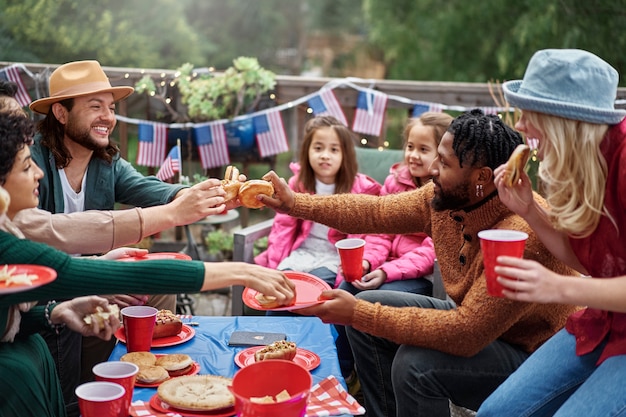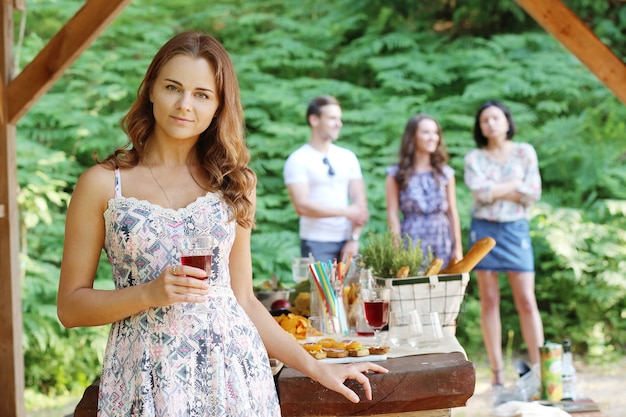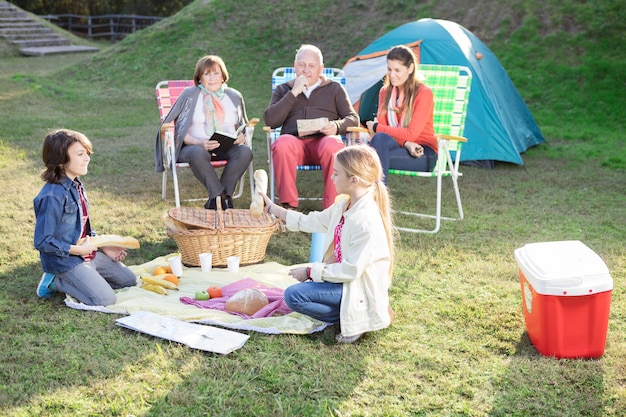Can you start a BBQ with cardboard?
Introduction
Starting a barbecue is often associated with using firelighters, newspaper, or charcoal briquettes. However, have you ever wondered if you can start a BBQ with cardboard? While it may seem unlikely, cardboard can indeed be used as a fuel source for starting a barbecue. In this article, we will explore the feasibility of using cardboard to ignite a BBQ and provide you with some useful tips on how to do it effectively.
Using Cardboard as a Fuel Source
Cardboard is primarily made up of cellulose fibers, which are a common component in many types of fuel sources. When ignited, cardboard burns at a high temperature, making it suitable for starting a BBQ. However, it’s important to note that not all cardboard is created equal, and certain types are more suitable for this purpose than others.
Choosing the Right Type of Cardboard
When using cardboard to start a BBQ, it is crucial to select the right type of cardboard. Avoid cardboard that has been treated with chemicals, such as glossy or laminated cardboard, as these can release harmful substances when burned. Opt for plain, untreated cardboard boxes or packaging materials instead. Additionally, ensure that the cardboard is clean and free from any grease or oil stains, which can affect the burn quality.
The Cardboard Chimney Method
One popular method for starting a BBQ with cardboard is the cardboard chimney technique. This method involves rolling up several sheets of cardboard into a cylinder shape, creating a chimney-like structure. The chimney is then placed vertically at the center of the charcoal or wood in the grill, with the bottom end resting on the charcoals. By lighting the top of the cardboard chimney, the flames will gradually catch on to the surrounding charcoal or wood, providing an efficient and reliable ignition source.
“Using cardboard to start a BBQ can be a convenient and eco-friendly choice. Just make sure to follow safety precautions and use the right type of cardboard.”
Cardboard Safety Precautions
While using cardboard to start a BBQ can be a convenient and eco-friendly choice, it is crucial to prioritize safety. Here are some important safety precautions to keep in mind:
- Ensure proper ventilation: When burning any material, including cardboard, it’s essential to have adequate airflow to prevent the buildup of harmful smoke.
- Keep a fire extinguisher nearby: Always have a fire extinguisher or a bucket of water nearby in case of any unexpected flare-ups or emergencies.
- Monitor the fire: Once the cardboard has ignited the charcoal or wood, keep a close eye on the fire and maintain control over it throughout the grilling process.
Can you use newspaper to start charcoal?
Starting a charcoal fire can be a challenge, especially if you don’t have the right tools or materials on hand. One common question that often arises is whether newspaper can be used to start charcoal. Let’s explore this topic and find out if using newspaper is a good idea.
The pros and cons of using newspaper
Pros: Newspaper can provide a quick and easy way to ignite your charcoal. It is readily available in most households, making it a convenient option. Additionally, newspaper burns quickly, creating a hot flame that can help light the charcoal faster.
Cons: While newspaper can be effective for starting a charcoal fire, there are a few drawbacks to consider. Firstly, newspaper produces a lot of ashes when burned, which can affect the taste of your food if not properly managed. Secondly, newspaper may contain ink and other chemicals that can release harmful fumes when burned, impacting the flavor and quality of your grilled food. Finally, using newspaper alone may not provide enough heat or sustained burn to fully ignite and establish a charcoal fire.
Tips for using newspaper to start charcoal
- Use newspaper as a supplementary material: Instead of relying solely on newspaper, consider using it as a supplement to other fire-starting methods. Combine newspaper with lighter fluid, charcoal starters, or natural fire starters to ensure a successful ignition.
- Minimize ash contact with food: If you choose to use newspaper, be cautious about the amount of ash that comes into contact with your charcoal and ultimately your food. Create a barrier between the ash and the charcoal, either by using a charcoal chimney starter or placing the newspaper in a specific area.
“Using newspaper as a primary fire starter can compromise the flavor and safety of your food.”
Alternative methods for starting charcoal
If you’re concerned about the potential drawbacks of using newspaper, there are several other effective and safe methods for starting a charcoal fire. Some popular alternatives include:
- Charcoal chimney starter: This handy tool uses newspaper or natural fire starters to ignite the charcoal from the bottom, producing a consistent and even burn.
- Electric charcoal starters: These devices use electricity to generate heat and ignite the charcoal. They eliminate the need for newspaper or other combustible materials.
- Natural fire starters: Made from materials such as wood wool, sawdust, or paraffin wax, natural fire starters offer a clean and reliable way to start your charcoal.
In conclusion, while newspaper can be used to start charcoal, it comes with some caveats. Using newspaper as a primary fire starter can compromise the flavor and safety of your food. It’s best to use newspaper as a supplementary material and consider alternative methods for a more efficient and enjoyable grilling experience.
How long does a disposable BBQ stay lit for?
Disposable barbecues have become a popular choice for outdoor cooking, especially in the UK where we love our summer barbecues. They offer convenience and portability, making them ideal for picnics, camping trips, or even a quick barbecue session in your own backyard. But one question that often comes up is: how long does a disposable BBQ stay lit for?
Burning Time
The burning time of a disposable BBQ can vary depending on several factors such as the brand, quality, and size of the BBQ. On average, a standard disposable BBQ will stay lit for around 1.5 to 2 hours. This should be enough time to cook a variety of food items, including burgers, sausages, and kebabs.
Factors Affecting Burning Time
- Weather Conditions: Windy or rainy weather can significantly reduce the burning time of a disposable BBQ. It’s important to choose a sheltered location or use a windbreak to protect the flames.
- Charcoal Quality: The quality of the charcoal used in the disposable BBQ can also affect its burning time. Higher-quality charcoal tends to burn longer and provide a more consistent heat throughout the cooking process.
- Cooking Practices: The way you cook on the BBQ can also impact its burning time. Opening and closing the lid frequently, or adding too much food at once, can cause the flames to die down faster.
Tips for Extending Burning Time
If you want to extend the burning time of your disposable BBQ, here are a few tips:
- Ensure proper ventilation by using the air vents on the BBQ.
- Opt for a larger size disposable BBQ if you anticipate longer cooking sessions.
- Use charcoal briquettes instead of lump charcoal, as they tend to burn more slowly.
“Disposable barbecues have become a popular choice for outdoor cooking, especially in the UK where we love our summer barbecues.”
In conclusion, while a disposable BBQ may not have the same burning time as a traditional charcoal grill, it can still provide sufficient cooking time for most outdoor cooking needs. By considering factors such as weather conditions, charcoal quality, and cooking practices, you can make the most out of your disposable BBQ and enjoy a delicious outdoor meal with family and friends.
How long does it take for coals to turn GREY?
When it comes to barbecuing, charcoal is a popular choice due to the smoky flavor it imparts on food. However, knowing when the coals are ready for grilling is crucial in achieving the perfect cook. One important indicator of charcoal readiness is its color. Let’s explore how long it takes for coals to turn grey and what it means for your BBQ experience.
Why does charcoal turn grey?
Charcoal briquettes usually start as black lumps but gradually turn grey during the burning process. This color change occurs due to the combustion process, where the carbon-based compounds in the charcoal react with oxygen. As the charcoal burns, it undergoes various stages, starting from black to red-hot and finally settling into a greyish-white ash.
How long does it take for coals to turn grey?
The time it takes for coals to turn grey can vary depending on several factors, including the type of charcoal, outside temperature, and airflow. On average, it takes around 20-30 minutes for charcoal briquettes to reach the optimal grey stage suitable for grilling. However, this timeframe can be influenced by external factors such as wind, humidity, or the use of lighter fluid.
Tips for faster grey coals
- Use a chimney starter: This tool allows for efficient and uniform lighting of the charcoal, producing grey coals faster than other methods.
- Avoid excessive use of lighter fluid: While lighter fluid aids in quickly igniting the coals, using too much can extend the time it takes for them to turn grey.
- Arrange coals properly: Placing the coals close together can help retain heat and speed up the process of turning grey.
Grilling with grey coals
Once your charcoal is grey and covered in a layer of ash, it is a good indicator that they are ready for cooking. The grey coals provide consistent heat and are ideal for grilling a variety of foods. Remember to spread them evenly across the grill and adjust the distance between the food and the coals to control the cooking temperature.
Did you know? Grey coals are also an eco-friendly option as they indicate that most of the volatile compounds have burnt off, reducing smoke and environmental impact.
In conclusion, the time it takes for coals to turn grey can vary depending on different factors. However, on average, it takes around 20-30 minutes. By following the tips mentioned above and keeping an eye on the color change, you can ensure your coals are ready for that perfect BBQ experience.
When can you put food on a disposable BBQ?
If you enjoy outdoor cooking, a disposable BBQ can be a convenient and hassle-free option. However, it’s important to know when it’s safe to put food on the grill to ensure a delicious and risk-free meal.
Wait for the charcoal to turn gray
When using a disposable BBQ, it typically contains charcoal that needs time to heat up before it’s ready for cooking. Wait until the charcoal has turned gray, indicating it is fully ignited and hot enough to start grilling. This usually takes around 20-30 minutes depending on the brand and weather conditions.
Ensure no flames are present
Before placing your food on the BBQ, make sure there are no visible flames. Flames can quickly char the food and create an unpleasant taste. You want even heat to cook your food evenly and thoroughly. If there are still flames, carefully fan them or use a small amount of water to extinguish them.
Use a food thermometer to check internal temperature
Cooking meat, poultry, and seafood to a safe internal temperature is essential to prevent foodborne illnesses. Use a food thermometer to check the internal temperature of the thickest part of the food, ensuring it reaches the recommended safe temperature:
| Food | Safe Internal Temperature |
|---|---|
| Chicken and turkey (whole) | 165°F (74°C) |
| Steaks, roasts, and fish | 145°F (63°C) |
| Ground meats (beef, pork, veal, lamb) | 160°F (71°C) |
Allow food to rest before serving
Once your food reaches the desired internal temperature, remove it from the BBQ and let it rest for a few minutes. This allows the juices to redistribute, resulting in a juicier and more flavorful meal. Tenting the food with foil during the resting period can help retain the heat and moisture.
Remember, always follow the manufacturer’s instructions when using a disposable BBQ to ensure safe and proper usage.
By following these guidelines, you can enjoy a delicious and safe outdoor cooking experience with your disposable BBQ. So fire up the grill, invite your friends and family, and enjoy a tasty summer barbeque!
What does opening the vents on a BBQ do?
When firing up your BBQ, you may have noticed the vents on the grill lid and at the bottom of the unit. These vents serve an important purpose in controlling the temperature and airflow inside the barbecue. Understanding how to adjust these vents can greatly impact the cooking process and the final result of your grilled delights.
The Purpose of Vents
The vents on a BBQ allow for ventilation and control of oxygen flow. By adjusting the vents, you can regulate the intensity of the fire, maintain the desired temperature, and influence the speed of cooking.
Opening the Vents
When you open the vents, you’re increasing the oxygen supply to the fire, which helps it burn hotter and faster. This is useful when you need to sear meats quickly or achieve a high heat for certain cooking techniques like char-grilling or direct grilling. Opening the vents fully allows for maximum airflow, resulting in a more intense fire.
Tip: When opening the vents, ensure that both the top and bottom vents are open to create a consistent airflow throughout the barbecue.
Closing the Vents
Closing the vents restricts the oxygen supply, reducing the intensity of the fire and lowering the temperature inside the barbecue. This is beneficial for slower, indirect cooking methods such as smoking or roasting, allowing for a gentler and longer cooking process. By partially closing the vents, you can achieve a precise and stable cooking temperature.
The Importance of Temperature Control
Controlling the vents is a fundamental aspect of successful BBQ cooking. Properly adjusting the vents allows you to maintain a consistent temperature throughout the cooking process, preventing uneven cooking or burning. It also gives you versatility, enabling you to adapt to different recipes and cooking techniques.
Quote: “Mastering the art of vent control is the key to becoming a barbecue maestro. It’s the secret behind perfectly cooked meats and mouth-watering flavors.” – BBQ enthusiast
Here’s a simple guide on how to adjust the vents based on your needs:
| Vent Position | Effect |
|---|---|
| Top and bottom vents fully open | Maximize heat and airflow for high-temperature grilling |
| Top vent fully open, bottom vent partially closed | Reduce heat and create an even cooking temperature for indirect cooking |
| Top vent partially closed, bottom vent partially closed | Maintain a steady moderate heat for longer cooking processes |
| Top and bottom vents nearly closed | Minimize heat and create a low-temperature environment for smoking |
Remember: Experimenting with vent adjustments and observing the grill’s response will help you understand how to achieve the desired results for different recipes and cooking styles. Happy grilling!


